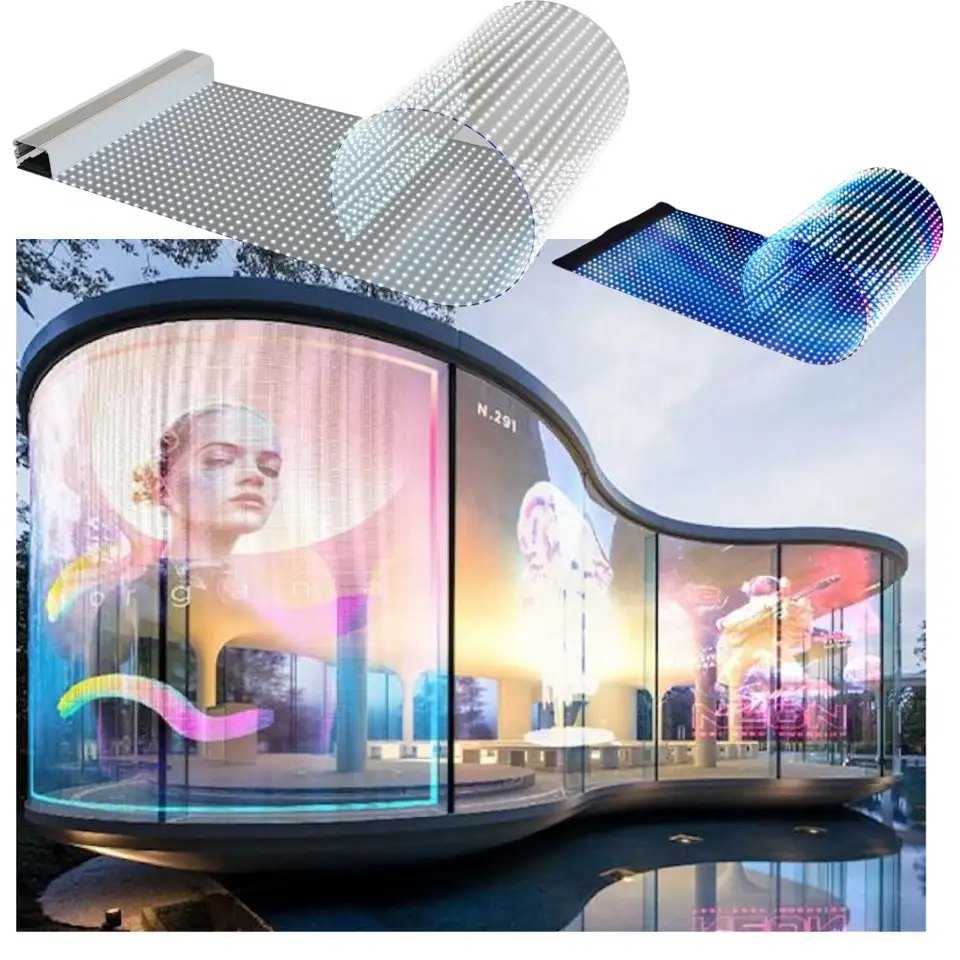how should merchants choose suitable LED transparent screens according to their needs?
Eerstens, common LED transparent screen models include: P3,91, P6, P8, P10, P20, P25, ens. Where P is the distance between points, and the following values are the distance in millimeters. The spacing between P6 points is 6mm, while P8 is 8mm. The smaller the number after P, the more pixels per unit area, and the clearer the image. Choose P6, P8, or P10 for closer viewing distances, and P20, P25 for farther viewing distances.

How to select indoor LED transparent screens?
Choose small spacing models for small area screens, and large spacing models for large areas. Byvoorbeeld, for an LED transparent screen of approximately 30 vierkante meter, it is recommended to choose 3.91 instead of 9.26 of 15.6; LED transparent screens with an area of over 50 square meters are available for selection from 9.26, with a sufficient budget. Natuurlik, the effect of choosing 3.91 is very clear, but the cost can be high, and sometimes there is no need to spend more. Daarbenewens, it is also necessary to consider the usage environment and budget, such as different indoor and outdoor displays with low brightness and high requirements for outdoor display brightness.
LED transparent screen selection guide and precautions
1. Point spacing and resolution are closely related, and product selection should pay attention to the application situation
In the current small pitch LED market, permeability, point spacing, large size, and resolution are key points for manufacturers to compete in technology. In practical operation, these factors can also affect each other, and it is necessary to match specific point spacing with appropriate transparent screen size to achieve the best display effect.
The product with a spacing of 3.91 * 7.81mm achieves a full HD resolution of 1920×1080, resulting in a corresponding screen area of 57.1 vierkante meter. Even without a base, if the user’s application space is limited, the installation difficulty will greatly increase, and the cost will naturally increase. Daarbenewens, if the audience wants the best viewing experience, they must choose the best viewing distance. In practical operation, the optimal visible distance is point spacing/0.3. The distance is generally 2.78 * 5.56mm, while the distance is 3.91 * 7.81mm. In practical applications of LED transparent screens, the smaller the dot spacing and the higher the resolution, the better the actual effect. It is necessary to consider the screen size and application space comprehensively. Huidiglik, the smaller the dot spacing and the higher the resolution, the higher the price of LED transparent screens. If the application environment is not fully considered when purchasing a product, it may lead to high prices and the inability to achieve the expected application effect.
LED transparent screen
2. Selection of LED transparent screen brightness
Full indoor display Including: indoor stage, uitstalsaal, conference room, ens. The light in the room is dark, and the brightness of the LED transparent screen should be controlled between 800-1500CD. It is recommended not to exceed this brightness range. If it is too bright, it will appear too dazzling, affecting the viewing effect, and it will also consume more power.
Semi outdoor display Including: shopping centers, sales department entrances, ens. The semi outdoor lighting environment is better than indoor, and the brightness selection should be controlled around 2000-3500CD to ensure the normal display effect of the transparent screen.
The LED transparent screen is oriented towards a non sunny direction, which is perfectly satisfied according to the customer’s environment of 3000CD-4500CD; When the LED transparent screen is facing towards the sun, low brightness transparent screens may experience blurry images due to insufficient brightness. In a sunny environment, the brightness of the transparent screen should be selected between 5000-6000CD to meet the normal display effect in environments with strong sunlight.
